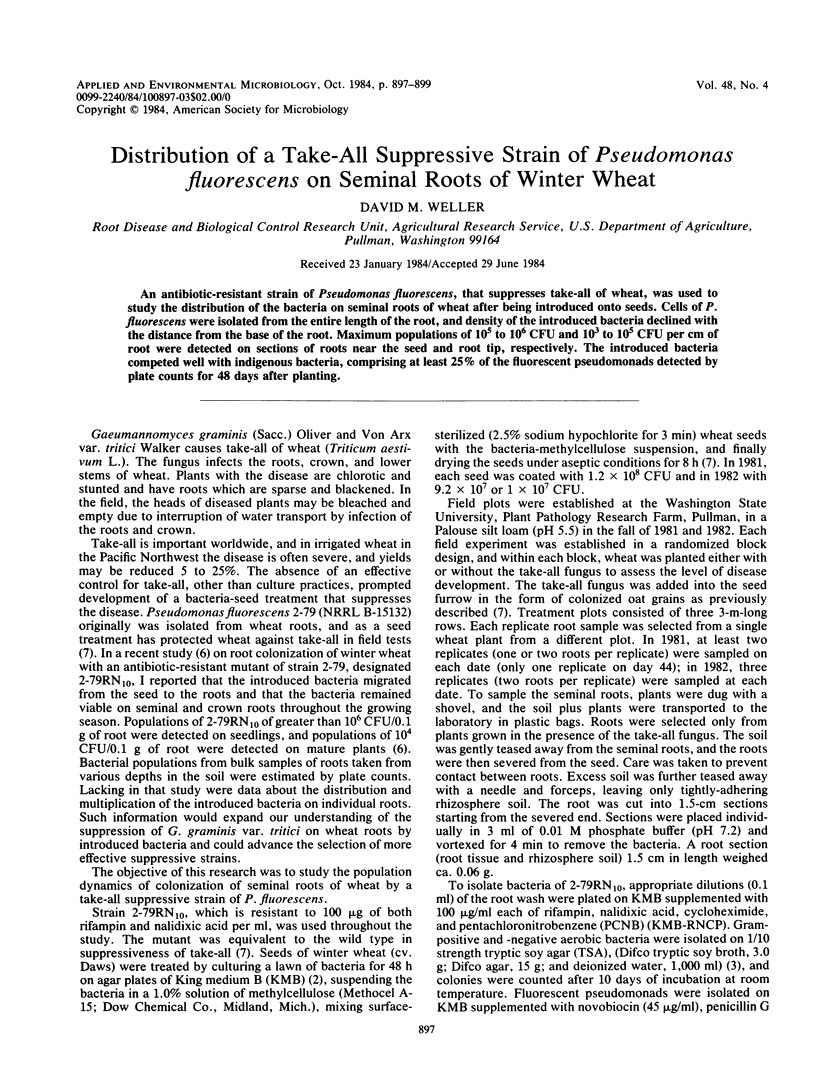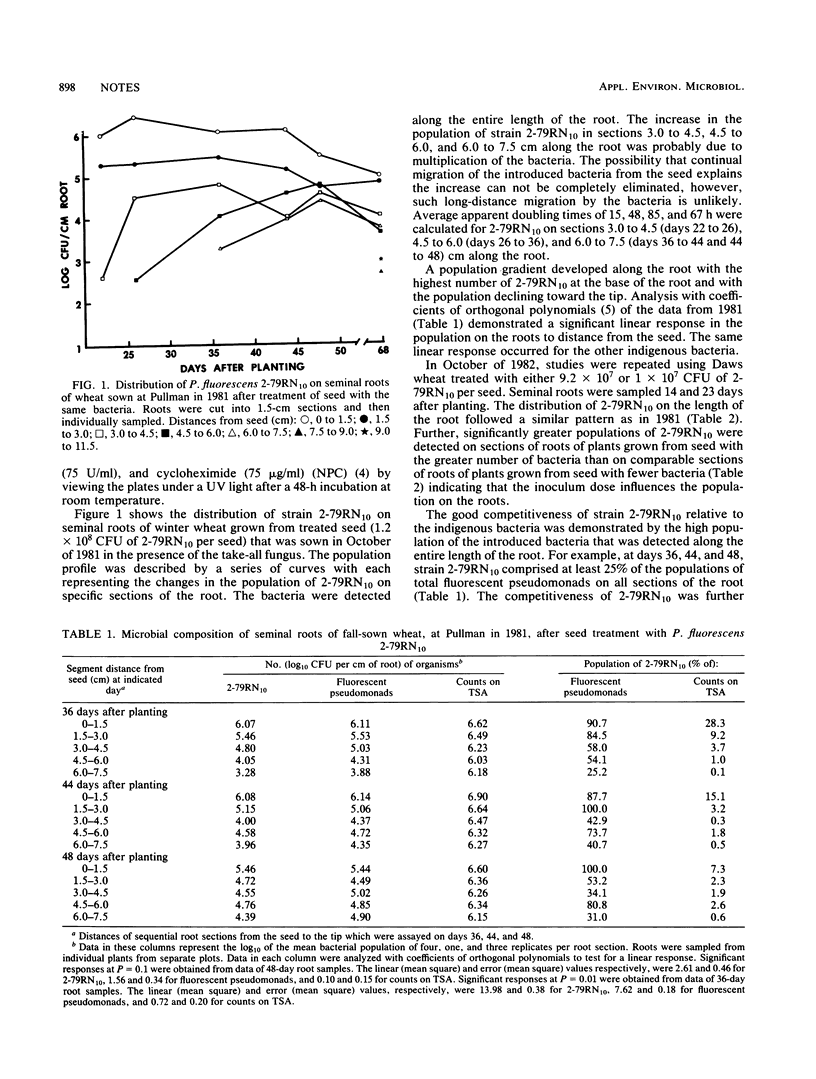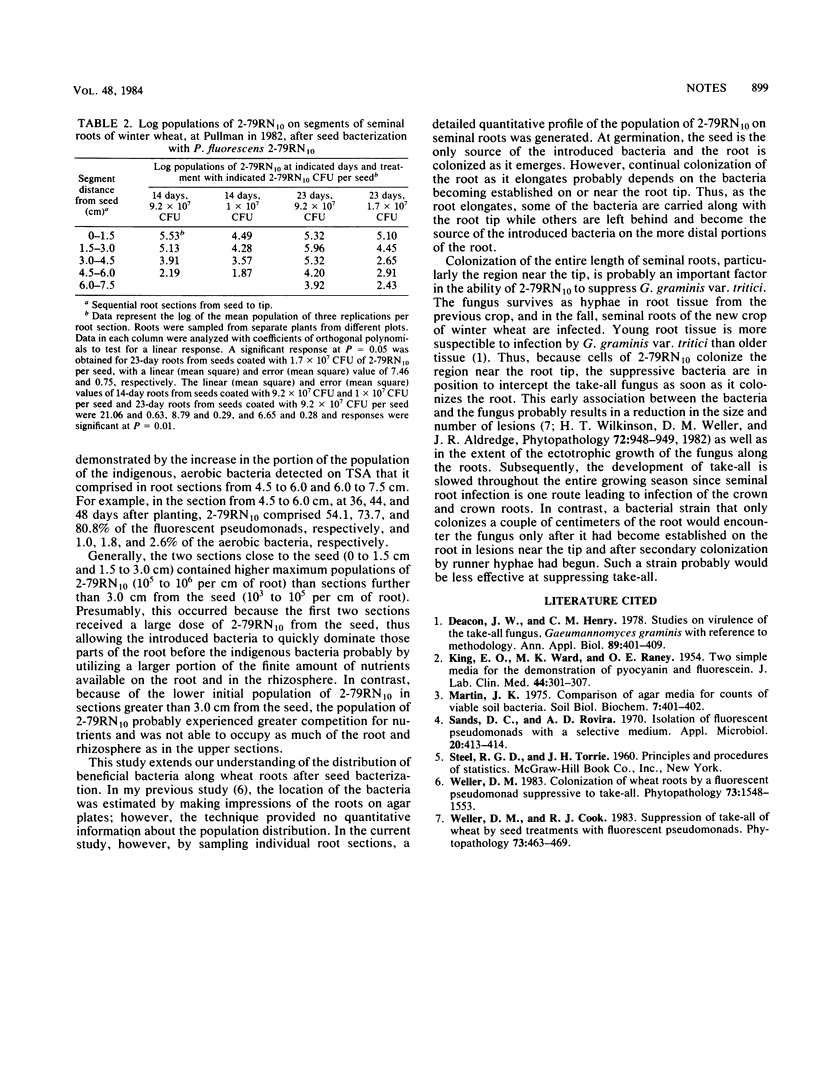Abstract
An antibiotic-resistant strain of Pseudomonas fluorescens, that suppresses take-all of wheat, was used to study the distribution of the bacteria on seminal roots of wheat after being introduced onto seeds. Cells of P. fluorescens were isolated from the entire length of the root, and density of the introduced bacteria declined with the distance from the base of the root. Maximum populations of 105 to 106 CFU and 103 to 105 CFU per cm of root were detected on sections of roots near the seed and root tip, respectively. The introduced bacteria competed well with indigenous bacteria, comprising at least 25% of the fluorescent pseudomonads detected by plate counts for 48 days after planting.
Full text
PDF


Selected References
These references are in PubMed. This may not be the complete list of references from this article.
- Hanson C. W., Martin W. J. Microwave oven for melting laboratory media. J Clin Microbiol. 1978 Apr;7(4):401–402. doi: 10.1128/jcm.7.4.401-402.1978. [DOI] [PMC free article] [PubMed] [Google Scholar]
- KING E. O., WARD M. K., RANEY D. E. Two simple media for the demonstration of pyocyanin and fluorescin. J Lab Clin Med. 1954 Aug;44(2):301–307. [PubMed] [Google Scholar]


